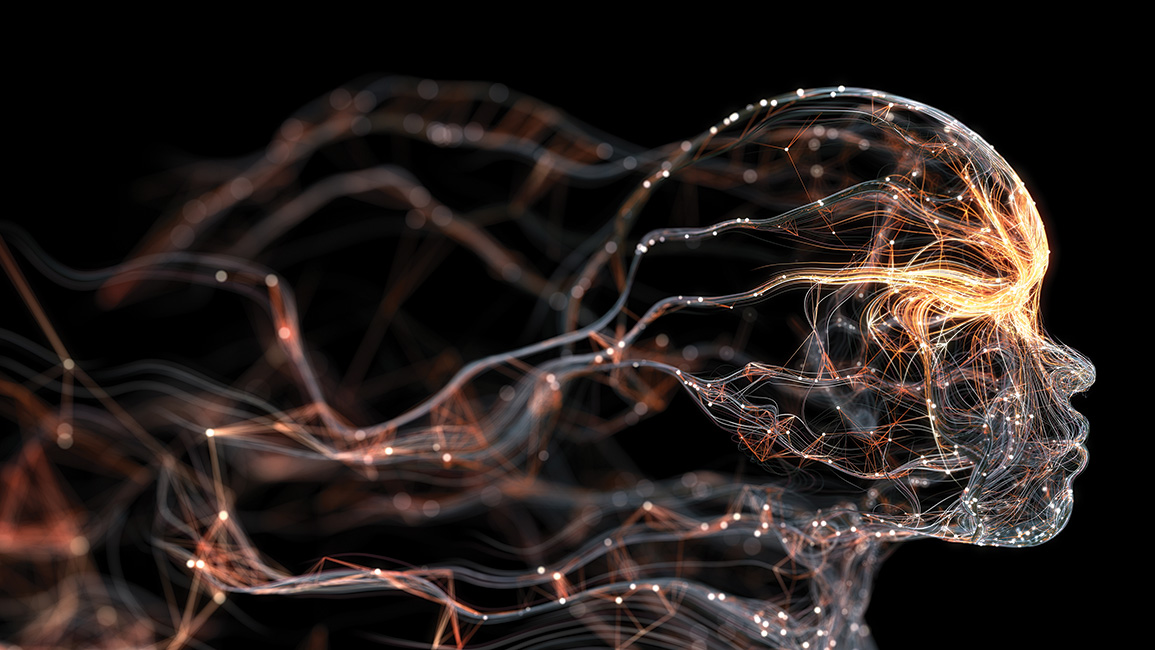Where did life come from?
March 1, 2021

Most of us think baby animals are cute and flowers are beautiful. Travel and nature documentaries show us some of the dazzling variety of plants, trees, animals, fish and creepy crawlies that exist on our planet. Science documentaries show reconstructions from fossils of weird and wonderful creatures such as dinosaurs that lived in the past. In biology classes, we learn that plants come from a “live” seed—if they have been killed by heat or chemicals they will not grow. Similarly, baby animals come from “living” parents. But everything comes from something, so how did the first lifestart?
You may be thinking, “Didn’t I learn in biology class that the first living cells formed in a pond and then over thousands of millions of years slowly evolved as a result of mutations and process like natural selection into all the different types of living things including humans?” Yes, that is what we are usually taught, but public school textbooks which often discuss this scientific theory tend not to explain how the first life started. In fact, it may surprise you to learn that scientists still do not know how the first life started and there is a good reason for this. It is actuallyscientifically impossible for non-living chemical molecules in nature to somehow form a living cell capable of reproduction and this science—called “biochemistry”—is now well established. Let me explain.
In sync
To form the building block for the first living cell, all the pieces have to form by chance in the same immediate location: including giant chemical molecules called bio-
polymers (ie. long chain peptides) to make proteins, long chain sugars and long chain fats, specific chemical compounds called enzymes, a special giant code molecule called DNA and a huge chemical code reader molecule called a ribosome.
All those processes must happen at the same time. These molecules have to be assembled by random natural processes in nature into a very complex structure that protects the hundreds of different chemical reactions that constitute the metabolic processes; thereby sustaining life and reproduction in the cell.
But there are insurmountable problems that prevent this from ever happening. Firstly, long chain biopolymers do not form by themselves in nature; they have to be synthesised by live organisms. The chemical reactions needed to form these compounds only work in the presence of special chemicals called enzymes that initiate the reactions. For example, the petrol in a lawn mower fuel container sits safely in the garage—it does not react with oxygen in the air and burn. But if you apply a high temperature from a burning match or a spark to the petrol, it will react with oxygen in the air and rapidly burn.
The spark provides what we call “activation energy” for the chemical reaction to start. Similarly in nature, only living systems provide the right conditions to kickstart the activation energy for biopolymers to form. This is a classic “which came first: the chicken or the egg” problem.
But there is more. For a simple cell to form, it’s not just one or two biopolymer molecules which must form—but instead millions of identical biopolymer molecules forming from dozens of different types. Mathematical probability calculations of the chemical reactions involved tell us the probability of millions of identical just right molecules forming altogether is so low that it would never happen by chance- something which Darwinism may struggle to explain.
Then there is the problem that many millions of chemical molecules would somehow have to be arranged by blind natural environmental forces to form the first functioning machine: a single-celled organism. Again, the probability of this happening is so unlikely that it would never happen by chance.
The code
But there is still more to this problem, and that is a giant molecule we refer to as deoxyribonucleic acid, or DNA. It has to form by chance in order to encode information that tells molecular machines in a cell what to do to keep the cell functioning. The sentence you have just read is written in a code we call English language and uses 26 letters—a, b, c, d, e . . . etc. Living organisms use a code which has only four letters to which we assign the symbols A, C, T and G. Instead of letters written on paper or typed on a computer screen, this code uses small chemical structures called nucleobases known as adenine (A), cytosine (C), thymine (T) and guanine (G). These are chemically joined together so that they form long sequences, like: CCTGTGTATTTCGTAC—which becomes the coded instructions to make all the building blocks for the cell.
Now imagine this task. I would like you to write this article in code using just the letters A, C, T and G. For example you might say ACCCTA is the code for the word “where”, TATATATA is the code for “did”, GTGTA is the code for “life”, GGGCTA is the code for “come”, ACCCTAAAG is the code for “from” and the code for “?” is GAT. So the sentence “where did life come from?” becomes ACCCTATATATATAGTGTAGGGCTAACCCTAAAGGAT. This code has a designer—me—I just made it up now. But it illustrates how a four letter code system can work.
Evolutionary biologists and proponents of the belief that life on Earth arose naturally need faith that random blind chemical reactions formed a DNA code molecule—involving hundreds of thousands of nucleobases that just happened to be the code to build the same cell structure that was physically forming around it. Again, we know from mathematics and statistics that a complex code involving hundreds of thousands of letters, that provides the correct instructions for a complex molecular machine with millions of components is not going to happen by chance as Darwinian evolution suggests. It requires an intelligent programmer, just like the robots that assemble cars are controlled by a computer program written by an intelligent software engineer: one who knows what parts need to go where and when. Also, a fault or mutation in the program is not likely to produce a better car but rather one that doesn’t work properly.
Coincidence or not?
There is another issue as well. The DNA code is useless unless there is a code reading machine in the cell that can interpret the code and construct proteins. This molecular machine is a ribosome and is made up of more than 300,000 atoms. The biochemists who worked out the exceedingly complex structure of the ribosome were awarded the 2009 Nobel Prize in Chemistry. Interestingly, though the DNA code for a living cell contains the code to construct a ribosome, this code cannot be read unless one already exists. For me, the existence of the amazing DNA code and ribosome system clearly points to the existence of an intelligent agent who created life. There is an irreducible complexity to the biological systems here which is difficult to describe in the way that Darwinists or evolutionists attempt to. Also, based on probability calculations, we know that such an amazing code and reading system would never arise through blind-chance chemical reactions in nature.
Even if all these random chemical reactions somehow did line up and form the cell, with all its component parts including enzymes, DNA and ribosomes, it would simply be a clump of dead chemicals. It would not be alive.
For the clump of chemicals to become a “living” cell organism, hundreds of chemical reactions within a protected environment would have to be at just the right amount of “out-of-balance”, or dis-equilibrium. This would provide reactants for the neighbouring reaction to proceed at just the right rate, to be out-of-balance by just the right amount for the next reactions—and so on. These conditions for life are impossible to set up in a laboratory, which is why once a living organism has died it cannot be made alive again. This is why intelligent design theorists claim that the forms of life we see can only have come from an intelligent source.
Members of the scientific community who believe in evolutionary theory and do not wish to acknowledge that life came from the intelligent designer—a Creator God—have to defend the science of a living cell arising by chance from non-living chemicals.

Explanation
The Bible explains that all life came supernaturally from a Creator God who made the heavens and the Earth. This fits the theory of intelligent design – that there is no natural explanation for life and as a result it must have started supernaturally. The Bible also tells us that humans were a special creation made in the image of God the Creator. This is why Jesus referred to God as our Heavenly Father. Additionally, based on beliefs in the bible, Christianity claims that God is Spirit: that is, not made up of molecules and matter. When you think about it, our mind is also not material. Our brain matter is material which can be weighed on a balance and its volume measured. But our thoughts cannot be weighed on a balance or put inside a measuring cylinder. It is our non-material mind or thoughts which constitute who we really are, our humanity, and it is also our mind and thoughts that connect us with our Creator God.
One day the biochemistry of our body will fail. Chemical reactions will come to equilibrium and we will be dead. The Bible explains how originally things in the natural world that he created were not meant to die. Unfortunately, evil arose and death was the consequence. God promises that if we choose to follow His ways with our mind, our thoughts—we will be preserved as though we are asleep to awake with new bodies and spend eternity with our Creator in a new heaven and new earth where there will be no evil.
The Theory of Evolution not only offers no hope after death; it doesn’t fit in with the scientific evidence either. In contrast, the intelligent design argument and the belief in an intelligent cause for the creation of life is supported by the Bible’s Genesis account of the creation of life. This account fits the science and gives hope for a supernatural life hereafter. To find out more about what the intelligent design movement bases their ideas on, why not grab a Bible and read it.
Dr John Ashton is an Australian scientist and author of numerous books on evolution, health and faith. Having taught for 14 years in tertiary science, he also performed industrial research for 26 years.









